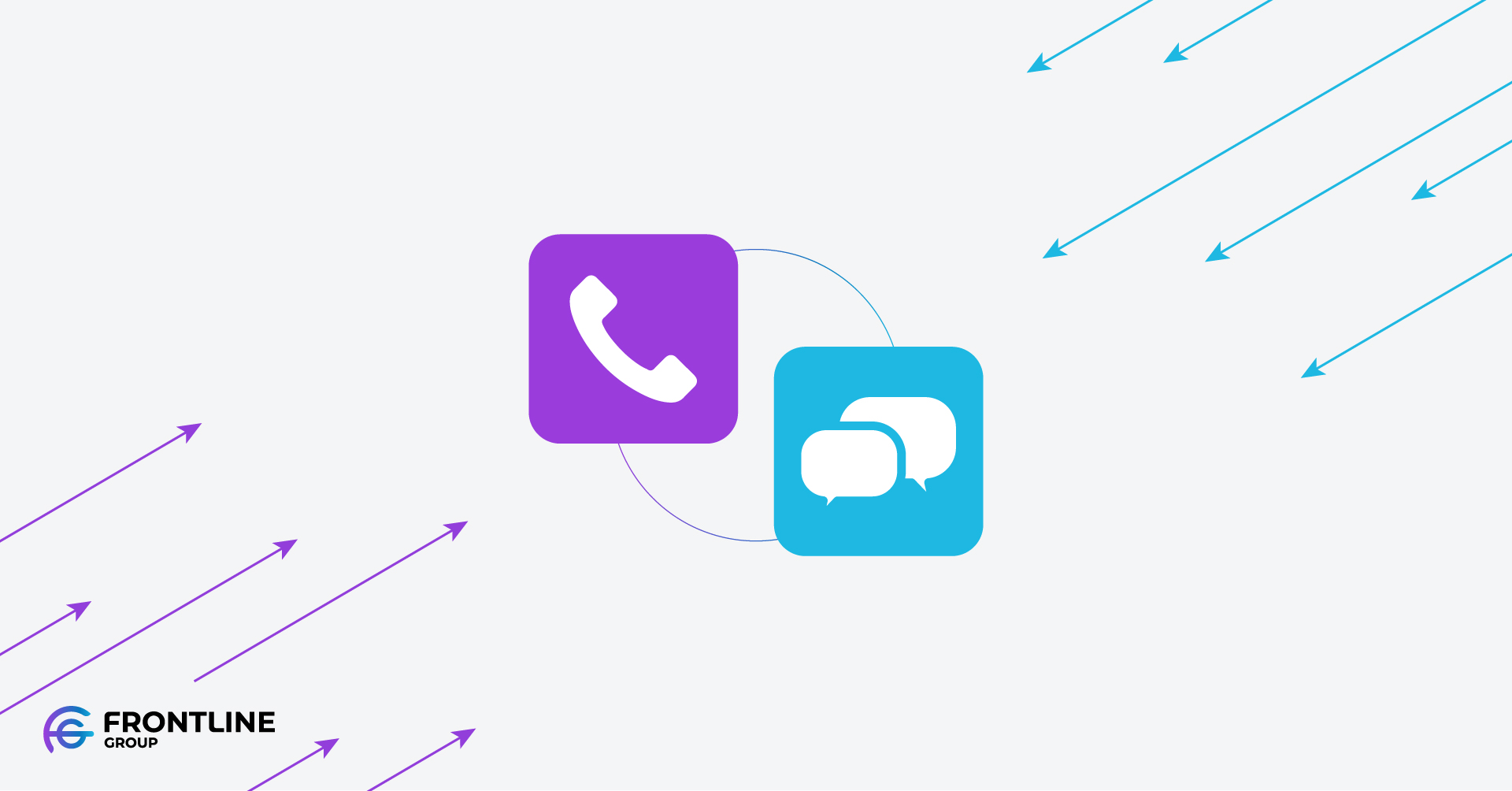
In the dynamic world of customer service, understanding the nuances between inbound and outbound contact centers is crucial for making informed business decisions. Both types of contact centers serve distinct purposes and employ different strategies to achieve their goals. As we move into the second half of 2024, the landscape of contact center operations continues to evolve, influenced by advancements in technology and changing customer expectations.
Previously, we explored the fundamental differences between inbound and outbound call centers. This updated article provides a deeper look into how these differences have evolved and what businesses need to know to stay competitive. By examining the latest trends and technologies, we aim to provide a comprehensive guide that helps businesses choose the right type of contact center for their needs.
What’s the Difference Between a Call Center and a Contact Center?
Traditionally, call centers focused exclusively on voice communication, handling large volumes of inbound and outbound phone calls. The primary objective was to manage customer interactions through telephone conversations, whether for customer service, technical support, or sales.
Contact centers, on the other hand, encompass a broader range of communication channels. In addition to handling phone calls, contact centers manage interactions through email, live chat, social media, SMS, and more. This omnichannel approach ensures that customers can reach out via their preferred method of communication, leading to a more integrated and cohesive customer experience.
The shift from call centers to contact centers reflects the changing expectations of customers who demand seamless, multi-channel interactions. By integrating various communication platforms, contact centers provide a unified view of customer interactions, enabling agents to deliver more personalized and efficient support, regardless of who called whom.
Understanding Inbound and Outbound Contact Centers
Inbound Contact Centers
Inbound contact centers primarily handle incoming calls and other communications from customers seeking assistance. These centers are designed to provide support and resolve issues quickly and efficiently. Common functions of inbound contact centers include customer service, technical support, order processing, and handling inquiries. Agents in inbound contact centers are trained to manage a variety of customer interactions and technologies, ensuring a high level of satisfaction and problem resolution.
Outbound Contact Centers
Outbound contact centers, on the other hand, focus on making outgoing calls and other communications to potential or existing customers. The primary goal of these centers is to generate leads, conduct market research, gather customer feedback, and drive sales. Outbound contact centers often engage in activities such as telemarketing, appointment setting, surveys, and follow-up calls. Agents in outbound contact centers require strong sales skills, the ability to handle rejection, and persuasive communication techniques.
The Evolution of Inbound and Outbound Contact Centers
The concept of call centers dates back to the early 1960s when businesses began using telephone systems to manage customer interactions. Initially, these centers were simple setups with basic call-handling capabilities. As technology advanced, call centers evolved into contact centers, able to include more sophisticated systems and processes. The introduction of computerized systems in the 1980s marked a significant shift, allowing for better call management and data tracking.
Over the years, the distinction between inbound and outbound contact centers has become more defined, with specialized training and technologies emerging to support each type. Today, contact centers leverage advanced technologies such as AI, machine learning, and data analytics to enhance their operations. The evolution of these centers reflects the growing importance of customer interactions in driving business success.
Key Differences in 2024
As technology has quickly evolved in 2024, the differences between inbound and outbound contact centers have become more pronounced, driven by technological advancements and evolving customer expectations. Here’s a closer look at the key distinctions:
Contact Center Operations
Inbound Contact Centers: The primary focus of inbound contact centers is to resolve customer issues quickly and efficiently. These centers handle a variety of tasks such as customer service inquiries, technical support, order processing, and general inquiries. The goal is to provide immediate assistance and ensure high levels of customer satisfaction.
Outbound Contact Centers: Outbound contact centers are geared towards proactive customer engagement. Their operations focus on reaching potential customers, generating leads, conducting market research, and driving sales. Activities in outbound contact centers include telemarketing, appointment setting, surveys, and follow-up calls.
Contact Center Agent Skills and Training
Inbound Contact Centers: Agents in inbound contact centers need strong customer service skills, empathy, and problem-solving abilities. Training programs emphasize handling a wide range of customer interactions, managing difficult situations, and using CRM systems effectively.
Outbound Contact Centers: Agents in outbound contact centers require excellent sales skills, persuasive communication techniques, and resilience in handling rejection. Training focuses on sales tactics, understanding customer needs, and achieving call targets.
Contact Center Technology
Inbound Contact Centers: Advanced technologies such as Interactive Voice Response (IVR) systems, Customer Relationship Management (CRM) software, and AI-powered chatbots are commonly used to enhance customer interactions. These technologies help streamline call routing, provide real-time support, and manage customer data effectively.
Outbound Contact Centers: Predictive dialers, lead management software, and sophisticated data analytics tools are essential for outbound operations. These technologies help optimize call lists, manage leads efficiently, and analyze campaign performance.
Contact Center Metrics
Inbound Contact Centers: Key performance metrics include call volume, average call resolution time, first call resolution rate, and customer satisfaction scores. These metrics help evaluate the efficiency and effectiveness of customer support operations.
Outbound Contact Centers: Performance is measured by metrics such as call volume, lead generation rates, sales conversion rates, and the effectiveness of marketing campaigns. These metrics provide insights into the success of outbound initiatives and overall sales performance.
The evolving landscape of contact centers in 2024 highlights the distinct roles and requirements of inbound and outbound operations. Understanding these differences is crucial for businesses to make informed decisions about their contact center strategies.
The Evolution of Contact Center Technology in 2024
Technological advancements continue to transform contact centers, enhancing their capabilities and efficiency. Here are some key technological trends shaping the future of inbound and outbound contact centers in 2024:
Advances in AI and Machine Learning
Artificial intelligence (AI) and machine learning (ML) are at the forefront of contact center innovation. These technologies enable contact centers to provide more personalized and efficient customer interactions. AI-powered chatbots and virtual assistants handle routine inquiries, freeing up human agents to tackle more complex issues. Machine learning algorithms analyze customer data to predict behavior, optimize call routing, and improve overall service quality.
Enhanced Data Analytics and Real-Time Reporting
Data analytics tools have become essential for contact centers, providing real-time insights into customer interactions and operational performance. Advanced analytics platforms collect and analyze vast amounts of data, enabling contact centers to make data-driven decisions. Real-time reporting allows managers to monitor key performance indicators (KPIs), identify trends, and address issues promptly. This proactive approach ensures continuous improvement and high service standards.
Integration of Omnichannel Support
Modern contact centers are evolving into omnichannel hubs, integrating multiple communication channels such as phone, email, chat, social media, and SMS. This integration ensures a seamless and consistent customer experience across all touchpoints. Customers can switch between channels without losing context, and agents have a unified view of customer interactions. Omnichannel support enhances customer satisfaction and loyalty by providing flexible and convenient communication options.
Security and Compliance Improvements
With the increasing volume of sensitive customer data handled by contact centers, robust security measures and compliance with regulations are more critical than ever. Advanced encryption, multi-factor authentication, and secure data storage protect customer information from cyber threats. Compliance with regulations such as GDPR and HIPAA ensures that contact centers adhere to industry standards and protect customer privacy. These security enhancements build trust and confidence among customers.
Choosing the Right Type of Contact Center for Your Business Needs
Selecting the appropriate type of contact center whether inbound, outbound, or a combination of both depends on your specific business goals, customer base, and available resources. Here are some key factors to consider:
Business Goals
Your business objectives play a crucial role in determining the type of contact center you need. If your primary focus is on providing exceptional customer service and support, an inbound contact center is likely the best fit. On the other hand, if your goal is to drive sales, generate leads, or conduct market research, an outbound contact center will be more effective. For businesses that require both high-quality customer support and proactive customer engagement, a blended approach may be ideal.
Customer Base
Understanding your customer demographics and preferences is essential for choosing the right contact center model. If your customers prefer reaching out for support via multiple channels, an inbound contact center with omnichannel capabilities can meet their needs. Conversely, if your target audience responds well to outbound sales calls or marketing campaigns, investing in an outbound contact center can help you connect with them more effectively.
Resources and Budget
The resources and budget available for your contact center operations also influence your decision. Inbound contact centers typically require investments in customer service training, CRM systems, and support technologies. Outbound contact centers, on the other hand, may need predictive dialers, lead management software, and sales training programs. A clear understanding of your financial constraints and resource availability will help you choose the most viable option.
How Frontline Group Supports Inbound Contact Centers
Frontline Group specializes in providing top-tier inbound contact center solutions. With years of experience and a deep understanding of the industry’s best practices, we offer services that ensure high-quality customer interactions and operational efficiency. Our focus is on delivering tailored solutions that meet the unique needs of each client, enabling them to achieve their business objectives.
Tailored Solutions for Client Needs
We understand that every business has unique requirements. Frontline Group works closely with clients to develop customized inbound contact center solutions that align with their specific goals. From initial consultation to implementation and ongoing support, our collaborative approach ensures that the solutions we provide are perfectly suited to each client’s needs.
Improve Your Customer Experience With Frontline Group
The key to success in the contact center industry lies in understanding the distinct functions of inbound and outbound centers, leveraging the latest technologies, and choosing the right partner.
Frontline Group is a premier provider of inbound contact center solutions. With our expertise, advanced technologies, and tailored approach, we help businesses deliver superior customer service and achieve their strategic goals. Contact us to learn how you can enhance your contact center operations and meet the demands of 2024 and beyond.

Every business is different, that’s why all of our solutions are custom built for you. Let’s chat and see how we can help improve your contact center.

